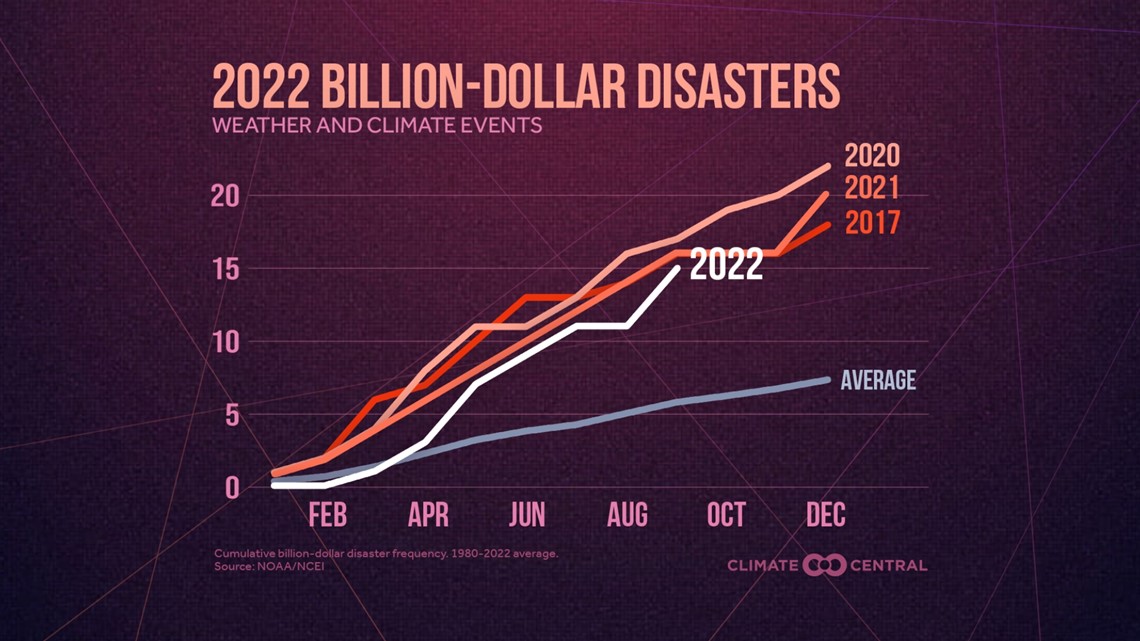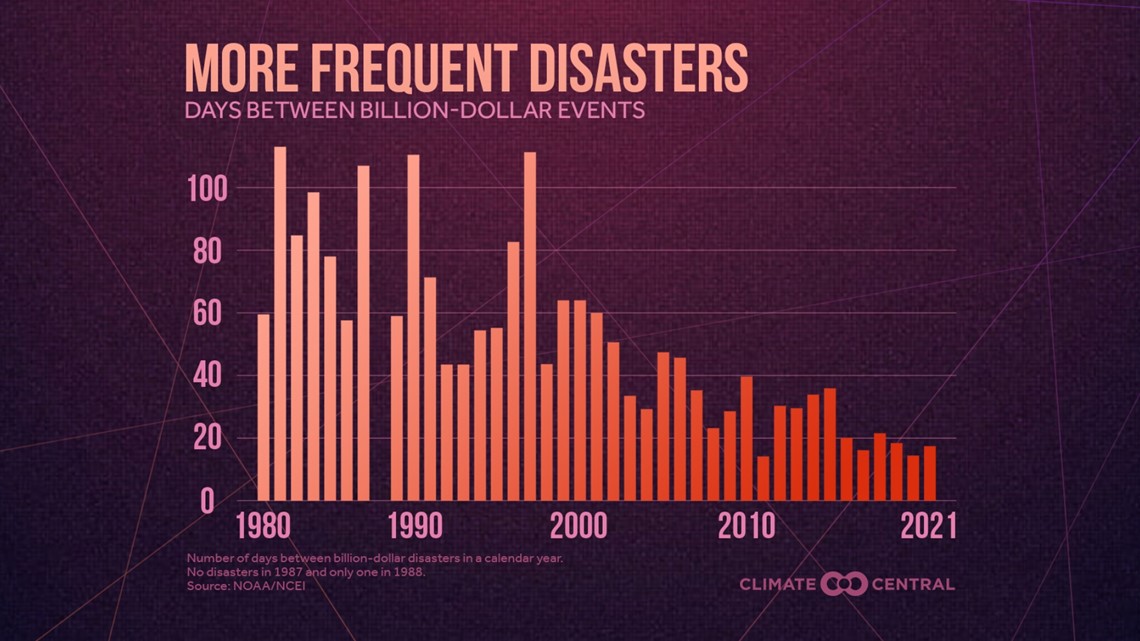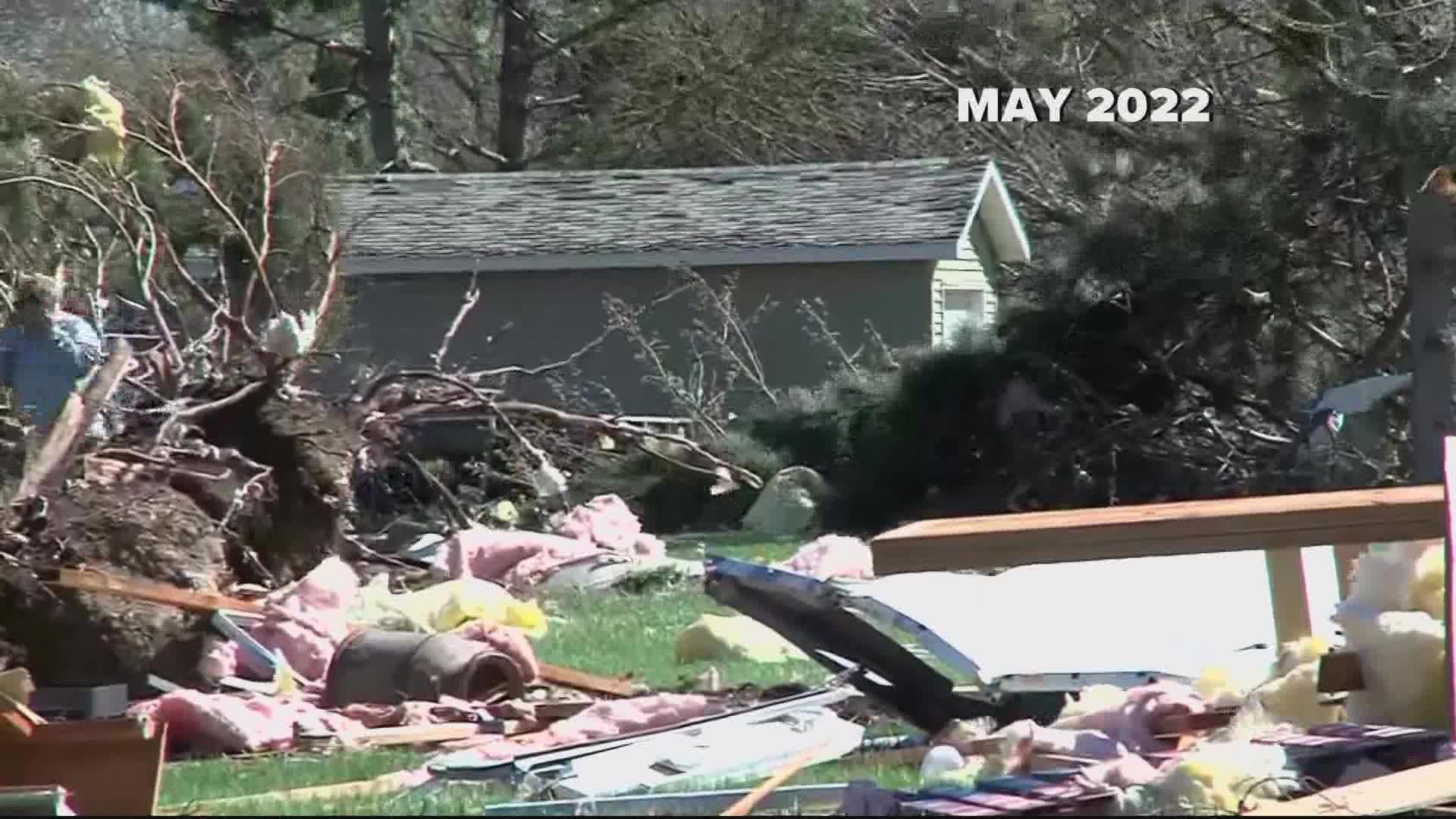WASHINGTON — As the Florida Gulf coast continues to recover from Hurricane Ian, we have to have the conversation about how frequently these devastating weather disasters are occurring. And Climate Central just released new data this afternoon outlining where the United States stands so far in 2022.
As of this month, the United States has experienced 15 billion-dollar disasters – or weather and climate disasters with losses exceeding $1 billion. Putting the year well above the historical average of seven events per year, but still below other costly years like 2021, 2020 and 2017 which is the costliest year on record for billion-dollar disasters.


As of the end of September, the total cost for 2022 was up to $29.3 billion and this doesn’t even include the costs to recover from Hurricane Fiona or Ian. Here’s a quick look back at the costly disasters of 2022 so far:
A tornado outbreak between April 4 and 7 produced 88 tornadoes throughout the southeast United States.
Severe storms produced golf ball-sized hail that left a trail of damage across Minnesota, Wisconsin and South Dakota back in May.
Also in May was a powerful derecho that brought winds exceeding 70 mph throughout the lower Midwest.
And again Ian and Fiona are still being accounted for - but hurricanes are historically among the most costly disasters averaging $21 billion per event.
We're not only seeing a higher number of catastrophic disasters, but we're also seeing them more frequently. In the last five years, there was an average of only 18 days between billion-dollar disasters. Looking back to the 1980s, there was an average of 82 days between disasters. And of course, with less time between these major events, there is less time to recover and prepare for future events.


According to a recent report by the Intergovernmental Panel on Climate Change (IPCC), it is an "established fact" that human-created greenhouse gas emissions have "led to an increased frequency and/or intensity of some weather and climate extremes since pre-industrial times." And unless we see rapid progress in cutting greenhouse gases and reducing human emissions, these trends are expected to continue.

